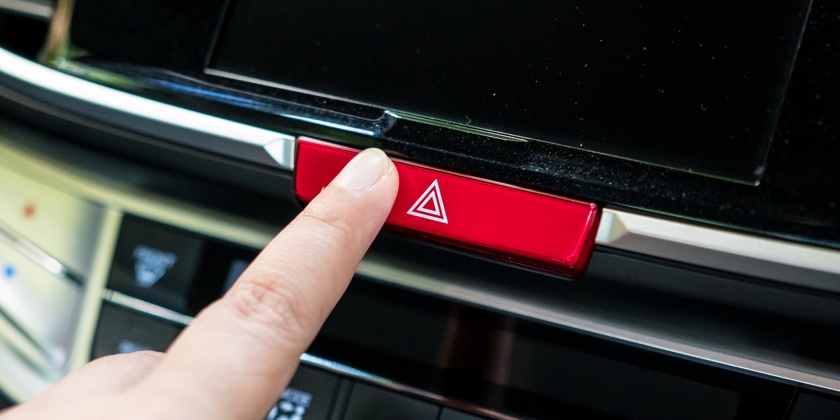When should you (and shouldn’t you) use hazard lights
- Hazard Lights: Used to warn of obstructions or hazards.
- When to Use: For stationary vehicles or brief motorway warnings.
- Misuse Risks: Fines or licence points; not for parking or gratitude.
- MOT Checks: Lights are inspected; Mr Tyre offers related services in Central England.

In a nutshell, hazard lights should only be used when your vehicle is posing a hazard to other vehicles, or to briefly warn others of a hazard up ahead. And yet, knowingly or unknowingly, drivers still take liberties with their lights. To help keep you on the right side of the law, let’s explore when you should and shouldn’t use hazard lights.
What are hazard lights?
Hazard lights are usually operated by a large, red triangle button on your vehicle’s dashboard. Pressing that button will cause two lights on the front of the car and two lights on the rear to flash on and off, warning other road users of some kind of hazard or obstruction, caused either by yourself or something else.
You can tell that hazard lights are on because your internal indicators will flash also.
When should you use hazard lights?
- According to the highway code, you should mainly use hazard lights when your vehicle is stationary on the road and a potential hazard to other road users. This can occur if your vehicle has broken down, if you’ve had to stop because of another obstruction ahead or if you’ve pulled over for another emergency reason. Hazard lights should only be switched off when your car no longer poses a hazard to other road users.
- You can also use hazard lights briefly on a motorway or dual carriageway when you want to warn drivers behind you that a hazard is coming up in the road that you need to slow down for. Don’t leave the hazard lights on any longer than needed – five seconds is usually long enough for the warning to be noticeable.
When should you not use hazard lights?
- You should never use them simply because you want to park or because you are dropping someone off. While you can use hazard lights to warn drivers that your car is stationary and is an obstruction, there must be a genuine reason for this obstruction.
- You shouldn’t flash your hazard lights to thank other drivers, as using these lights for any other reason than the official reason could be misinterpreted.
- They should not be used as a replacement for headlights or used to see in front of you.
- When your vehicle is being towed, hazard lights are not required.
- As a general rule, don’t use your hazard lights when your vehicle is moving, except in the circumstances explained in the previous section. If you need to drive slowly because of weather, for example, hazard lights should still not be used. That’s because when you are using hazard lights, the indicators stop working, meaning that if you make a turn when driving, you won’t be able to indicate your intention to turn to others.
To summarise, hazard lights should only be used when your vehicle is experiencing a hazard that could cause it to be an obstruction or danger to other road users. To use them under any other circumstance could result in a fine or points on your licence.
Hazard lights are checked as part of an MOT test; making sure each light is fully operational to help protect you and your vehicle on the road. For affordable auto services, including brakes, exhausts and MOT testing in Central England, look no further than Mr Tyre. Book in your car today online or give us a call.

